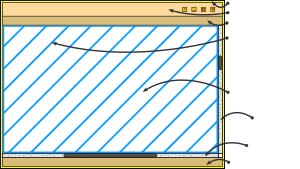
Back Sistema de finestres Catalan Okenní systém Czech Fenstersystem German Akendussüsteem Estonian سیستم پنجرهبندی Persian Ikkunointijärjestelmä Finnish Système de fenêtrage French מערכת חלונות HE Sistem penjendelaan ID Sistemo di fenestri IO
This article needs additional citations for verification. (December 2019) |

In computing, a windowing system (or window system) is a software suite that manages separately different parts of display screens.[1] It is a type of graphical user interface (GUI) which implements the WIMP (windows, icons, menus, pointer) paradigm for a user interface.
Each currently running application is assigned a usually resizable and usually rectangular surface of the display to present its GUI to the user; these windows may overlap each other, as opposed to a tiling interface where they are not allowed to overlap. Usually a window decoration is drawn around each window. The programming of both the window decoration and of available widgets inside of the window, which are graphical elements for direct user interaction, such as sliders, buttons, etc., is eased and simplified through the use of widget toolkits.
- ^ Kent, Allen; Williams, James G. (1996-10-11). Encyclopedia of Microcomputers: Volume 19 - Truth Maintenance Systems to Visual Display Quality. CRC Press. p. 227. ISBN 9780824727178. Retrieved 8 June 2017.
© MMXXIII Rich X Search. We shall prevail. All rights reserved. Rich X Search